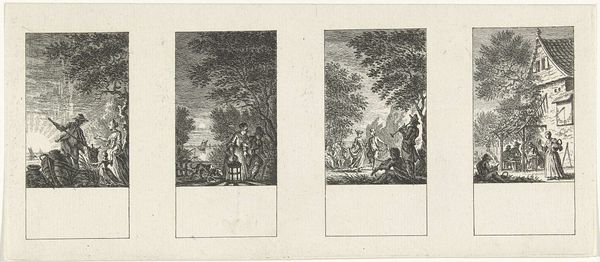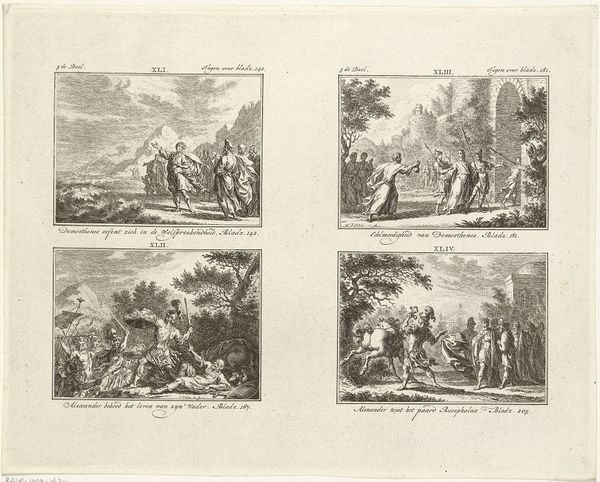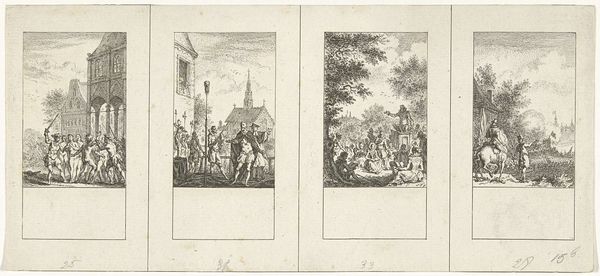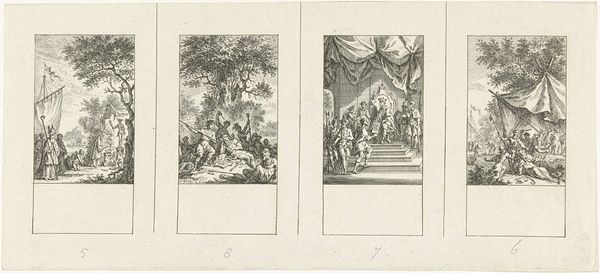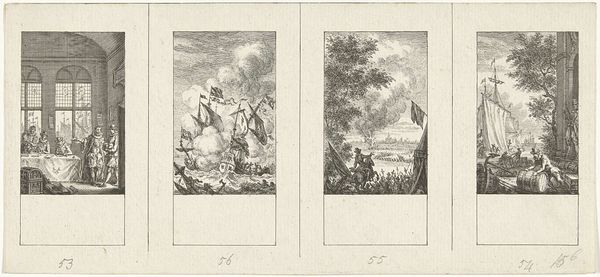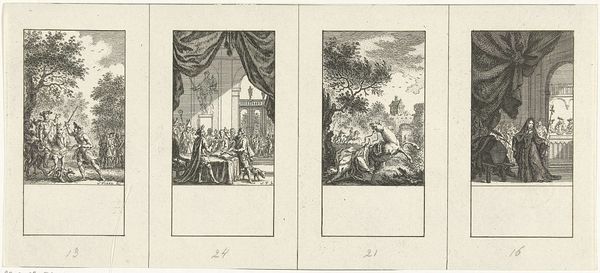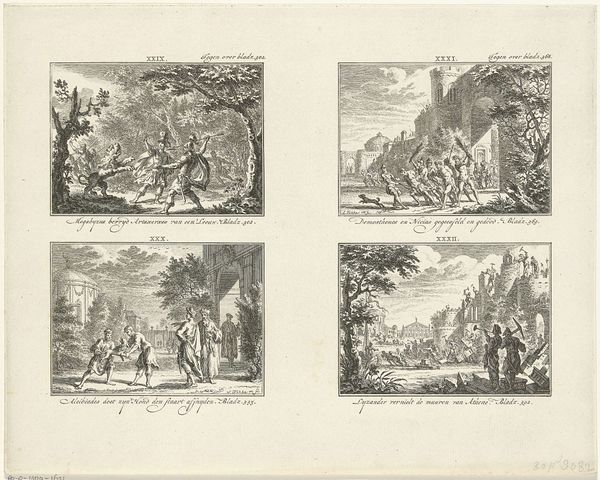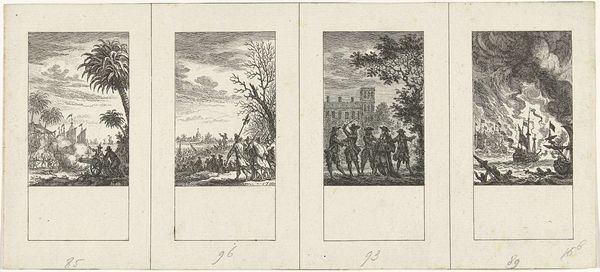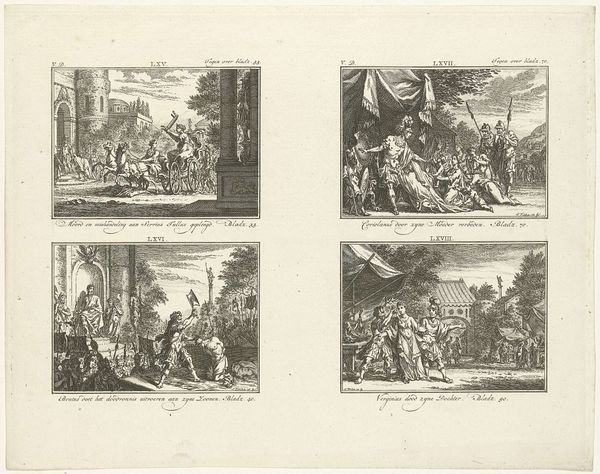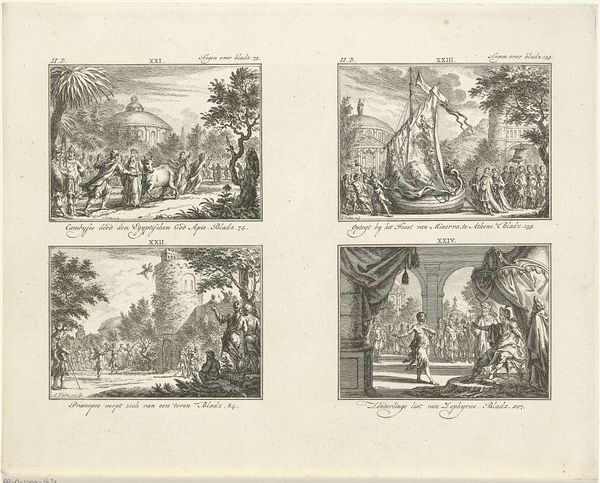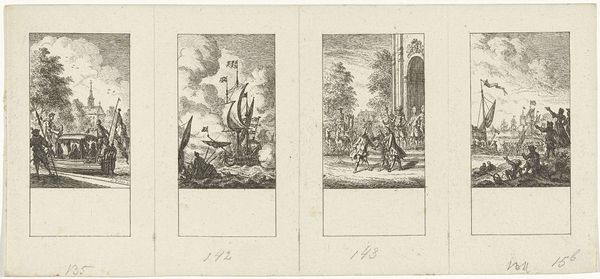
print, etching, engraving
#
baroque
#
pen drawing
#
dutch-golden-age
# print
#
etching
#
old engraving style
#
landscape
#
etching
#
figuration
#
genre-painting
#
history-painting
#
engraving
Dimensions: height 112 mm, width 260 mm
Copyright: Rijks Museum: Open Domain
Curator: At the Rijksmuseum, we have an etching and engraving entitled "Vier episodes uit de vaderlandse geschiedenis," or "Four Episodes from National History," created by Simon Fokke between 1722 and 1784. What are your first thoughts on it? Editor: It strikes me as a very classical representation of power, almost stage-like. The figures seem posed, the landscapes idyllic – yet something about the precision of the engraving feels a little sterile. There's a sense of removal, distancing. Curator: That distancing might stem from its function. These episodes were likely meant to serve as visual parables, instilling patriotic sentiment through allegory. Each panel represents a pivotal moment, imbued with moral significance. Take the first, where a regal woman appears to lead a young child. That’s likely an idealized depiction of a province guiding future generations, set against a serene landscape. Editor: Right, I see it now. The other scenes feel similar. But idealized according to whose vision? Each episode features these European figures at the fore. What's absent here are any depictions of class struggle, colonial violence, or the perspectives of anyone outside the ruling class. What narratives are suppressed for this grand national tale? Curator: You raise a vital point. The Dutch Golden Age, which this piece subtly echoes, was built on complex global networks and exploitation. The iconography here presents a carefully curated version of history. Note the visual cues: the strong light illuminating heroic figures, the receding landscapes providing context. It all reinforces a sense of inherent virtue. Editor: And that virtue, it implies, is inextricably linked to power and privilege. The piece inadvertently showcases how historical narratives become tools. The “episodes” serve to normalize the prevailing power structures of Fokke’s time. Curator: It reminds us to view such artworks with a critical eye. To examine not only what’s depicted but what’s strategically omitted. Editor: Precisely. This print highlights how visual narratives, even those seemingly straightforward, actively participate in shaping and reinforcing dominant ideologies. Curator: I will never look at this etching the same way! Thanks. Editor: Me neither. This brief consideration reveals layers of constructed history.
Comments
No comments
Be the first to comment and join the conversation on the ultimate creative platform.
